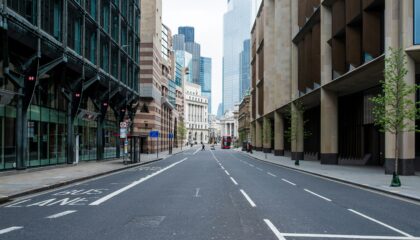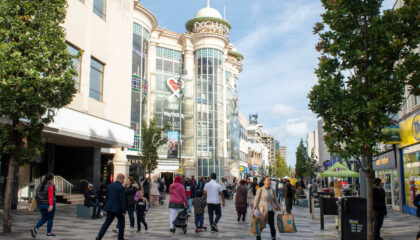Getting behind the idea of refurbishing existing buildings rather than demolishing them to make way for new ones would seem the most sustainable, lowest-carbon approach. However, it’s not that simple, writes Hedley Jones, Head of ESG, Refurbishment and Development, in this article for Sustain RE.
The current default position is that refurbishment rules. Indeed, 86% of new construction schemes on London offices launched in the past six months were refurbishment projects, according to Deloitte’s latest London Office Crane survey.
This is in line with updated planning guidance from Mayor of London, Sadiq Kahn, which says significant projects in the capital will be required to meet embodied carbon benchmarks and prioritise retaining existing buildings over demolition.
However, this is not always the best route to long-term carbon reduction. Take the Marks & Spencer’s flagship store on Oxford Street, (pictured) a 100-year-old building set to be torn down and replaced with 10 storeys of office space plus gym and a smattering of retail.
When critics argued the project would waste the embodied carbon of the existing building and generate an extra 39,500 tonnes of emissions, Khan halted the demolition plan. He later u-turned following a preliminary carbon report by engineering firm Arup which found that over its whole lifecycle, the new build would result in a lower carbon footprint than a refurbishment due to superior operational performance.
Although the demolition plan has now been “paused” until the scheme can be reviewed by government, the debacle shines a light on the notion that there is no one-size-fits-all approach.
Assess and compare the outcomes
Evaluation of the merits of refurbishment versus redevelopment must start with a rigorous Whole Life Carbon Assessment for each property in question. With the industry moving towards the RICS methodology, this is the standard by which to assess, and compare, the outcomes of refurbishment against redevelopment.
Building consultants need to assess what’s best in each individual case: the answer may not always be refurbishment. Older buildings may have limitations around the floor-to-ceiling heights, or the structural loading, or plant space. Consequently, the amount of carbon needed to go into a refurbishment may not stack up long term.
Without first assembling all the facts, building owners could unwittingly invest in a refurbishment that creates a property which is not as lettable, useful, flexible, or as efficient as a replacement could be. Redevelopment with a completely clean sheet may present a better long-term option, particularly when operational carbon over the life of the asset is factored in with a more efficient thermal fabric and services strategy.
Refurb vs development guidance does not go far enough
If carbon was assessed for all building projects, regardless of size, a centralised dataset could be built. Over time, this would lead to a repository of data for the establishment of carbon rules and allowances for both refurbishments and redevelopments, which would allow for effective benchmarking.
What’s more, the new guidance itself does not seem bold when compared to ambitious industry goals set by the London Energy Transformation Initiative (LETI). Baseline standards, coupled with aspirational targets, may help propel the market to reach further beyond regulatory compliance.
As the debate rages on, the danger is that embodied carbon is increasingly perceived as the only issue, when we do also still need to work towards reducing operational carbon. In this sense, the conversation around how refurbishment stacks up against redevelopment is far too limiting.
We need high quality sustainable design standards, driven by both regulatory guidance and market forces, to deliver buildings that people want to spend time in, and that will also generate the least amount of carbon emissions throughout the whole life cycle.
By Hedley Jones, Head of ESG, Refurbishment and Development.
This article first appeared in Sustain RE.



